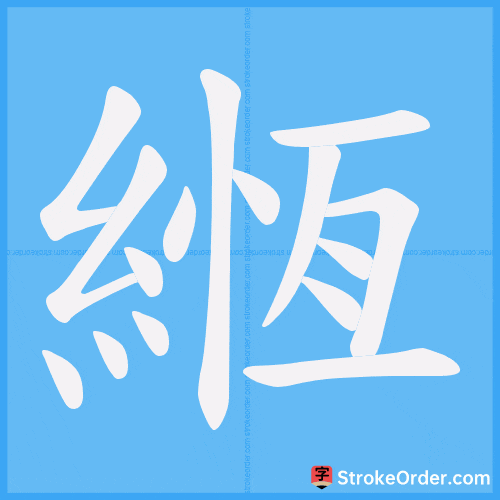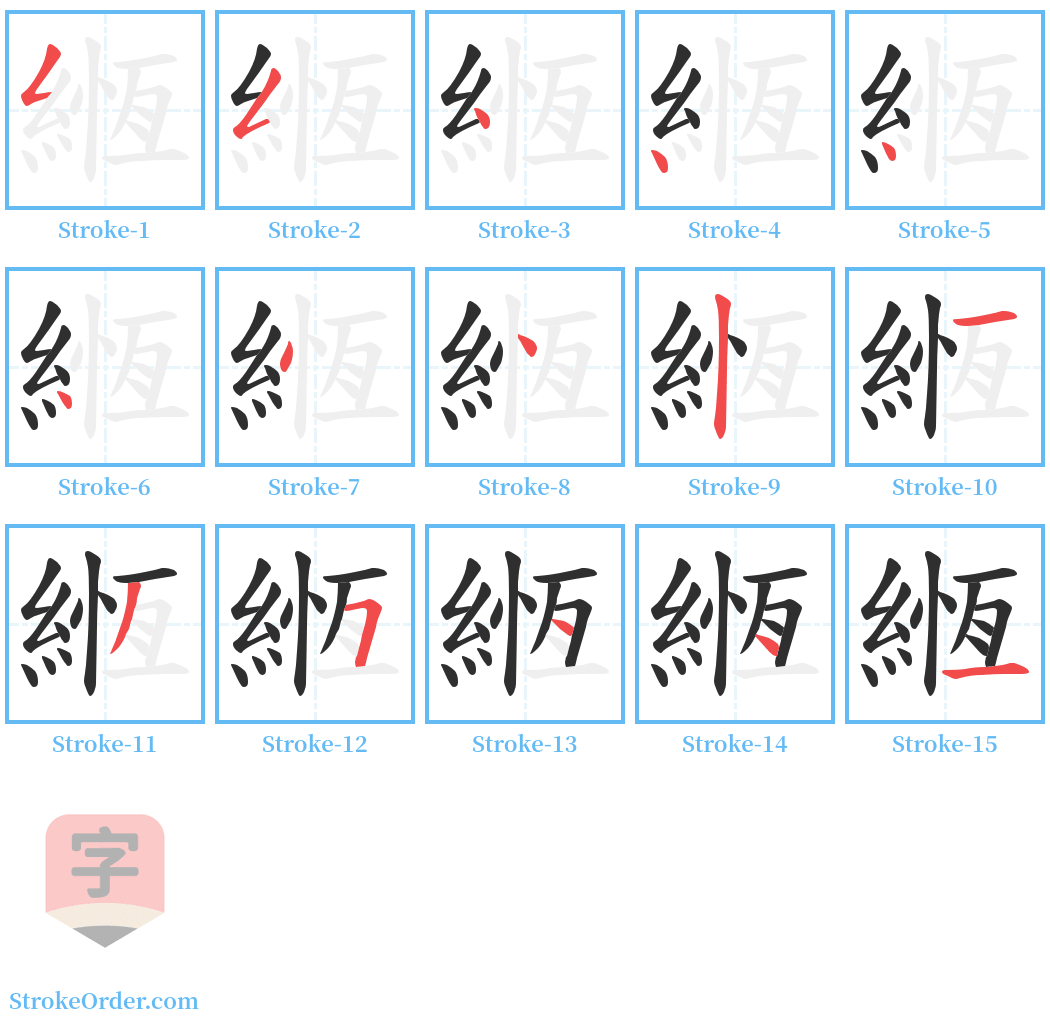緪 Stroke Order
Animated Stroke Order of 緪

Stroke Order Diagrams for 緪

Information of 緪
Pinyin
gēng、 gèng
Radical
糹
Strokes
15 strokes
Usage
★★
Definition
Definition of 緪:
1. 大绳子;粗索子。
1. A large rope; a thick cord.
2. 引急;绷急(琴弦)。
2. To pull tight; to tighten (a stringed instrument's string).
3. 竟。
1. Finally; ultimately.
Additional information:
- 《説文•糸部》 mentions: "緪,大索也。" (In "Shuowen Jiezi • Silk Section": “緪, a large rope.”)
- From Qing Dynasty, Wang Shidian's "Chou Lin Xing": “涒灘之歲陰氣凝,愁霖不絶如貫緪。” (In the year of erosion at the beach, the gloomy air condenses, and the sorrowful rain doesn't stop like piercing the rope.)
- In "Chuci • Jiu Ge • Dong Jun": “緪瑟兮交鼓。” (The string is pulled tight while the drums are struck.)
- Tang Dynasty's Liu Zongyuan's poem: “若人抱奇音,朱絃緪枯桐。” (If a person embraces a strange melody, the red strings pull taut on the dry paulownia.)
- Ming Dynasty's Liu Ji’s poem: “緪之朱絲絃,彈我《白雪》音。” (The taut red silk strings play the sound of "White Snow.")
- 《方言》 states: “絚,竟也。秦、晋或曰緪,或曰竟,楚曰筵。” (In "Dialect": “絚, ultimately. In Qin and Jin, it may be called 緪 or 竟, while in Chu it is called 筵.”)
- From "Guangyun • Shengtone": “緪,亦作絙。” (In "Guangyun": “緪 is also written as 絙.”)
- In "Wenxuan • Ban Gu's Reply to the Guest's Play": “潛神默記,緪以年歲。” (Subtly recalling in silence, ultimately marked by years.)